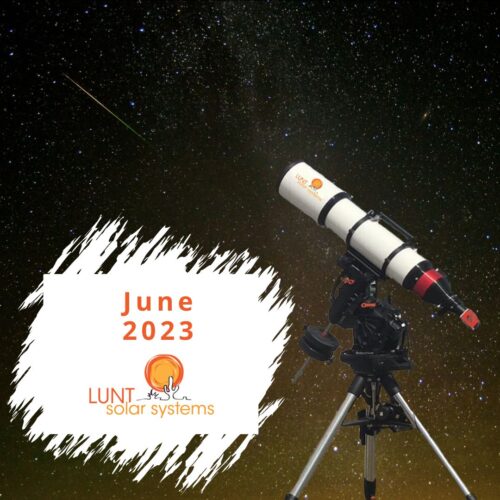
Mars will pass through a background star cluster known as the Beehive on June 1st and 2nd this month. A good pair of binoculars should be enough to see this rare event, but a Lunt Solar 80mm, 100mm or the 130mm Universal Telescope in Night mode will provide a much better view. Check out how you can find this phenomenon here.
The glorious Strawberry Full Moon will shine upon us on June 4th. You guessed it, it’s name comes from the ripening of wild strawberries during this month. It’s also called the Hot Moon and Mead Moon too! Check the Moon Calculator for the exact time this month’s Full Moon will arrive in your area.
Also on June 4th, Venus will be at its Greatest Eastern Elongation. This is when Venus will be farthest from the sunset. It is the best time to view Venus as it will be at its highest point above the horizon in the evening. Look for the bright planet in the west after sunset.
Venus is also in the Beehive on June 12, 13th. It will be seen very near the open cluster of stars in the constellation Cancer. The same situation applies with this event. A good pair of binoculars should be enough to see it, but again a Lunt Solar 80mm, 100mm or the 130mm Universal Telescope in Night mode will provide a much better view.
The New Moon happens on June 18th. This is the best time of the month to observe faint objects such as galaxies and star clusters because there is no moonlight to interfere.
Last but certainly not least is the June Solstice! The longest day of the year and marking the first day of summer in the Northern Hemisphere. The extended daylight is a great opportunity to get outside for a good long solar viewing or imaging session.
Don’t forget we LOVE to receive images taken by our customers through their Lunt Solar Equipment, so tag us @luntsolarsystems when you post on Facebook or Instagram. Or send your images via email to j.lunt@luntsolarsystems.com so they can be shared to our social pages.